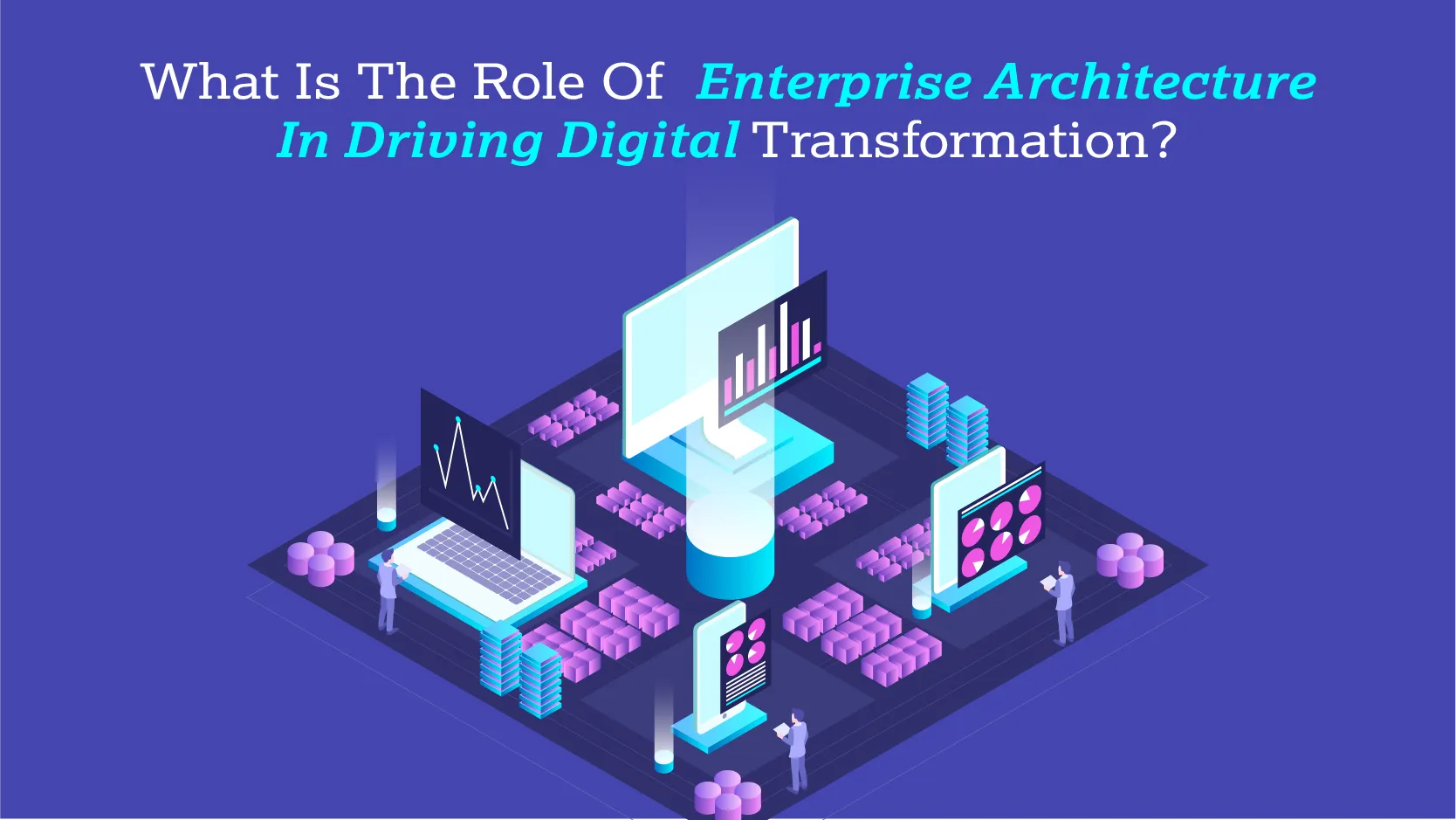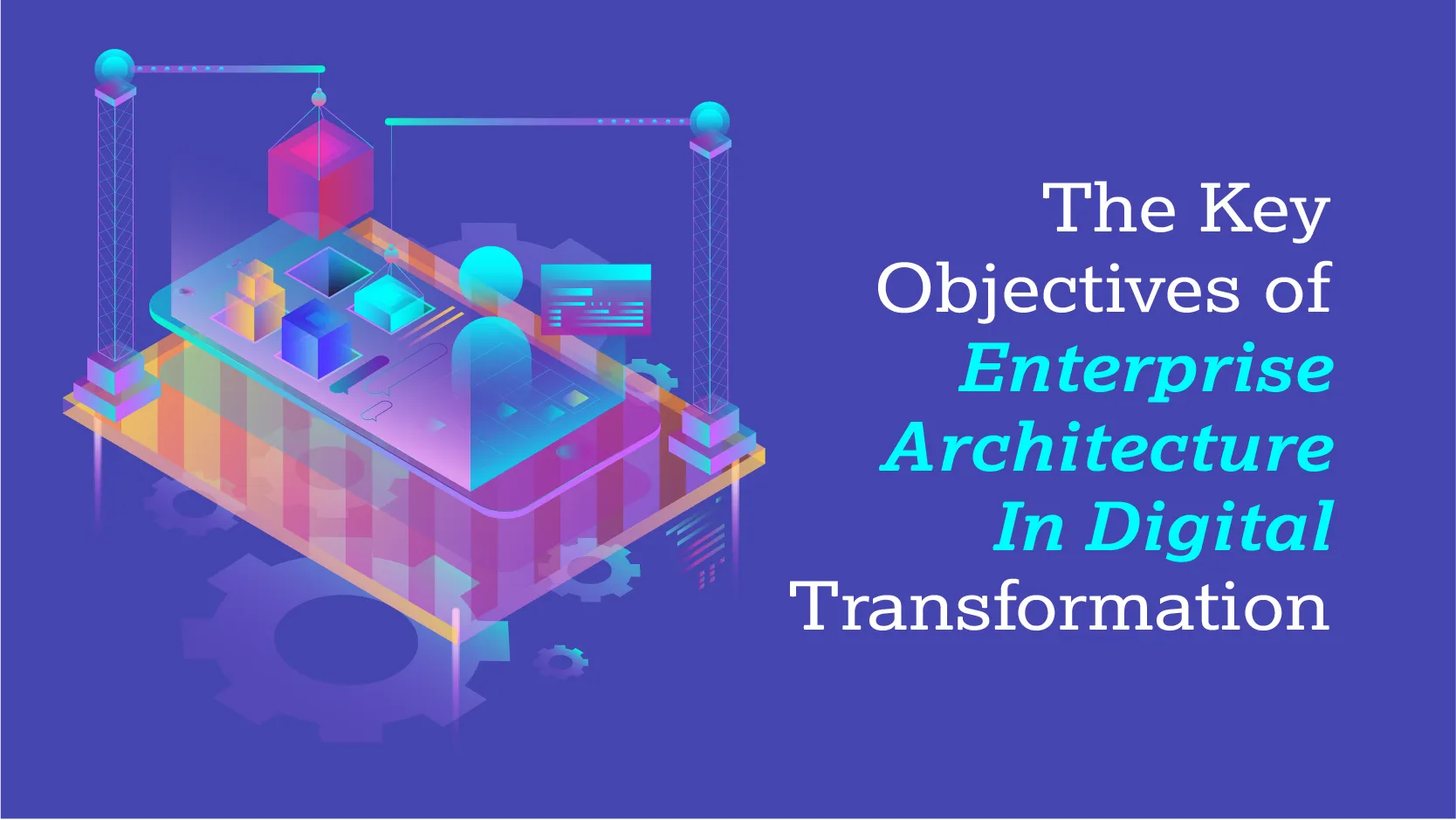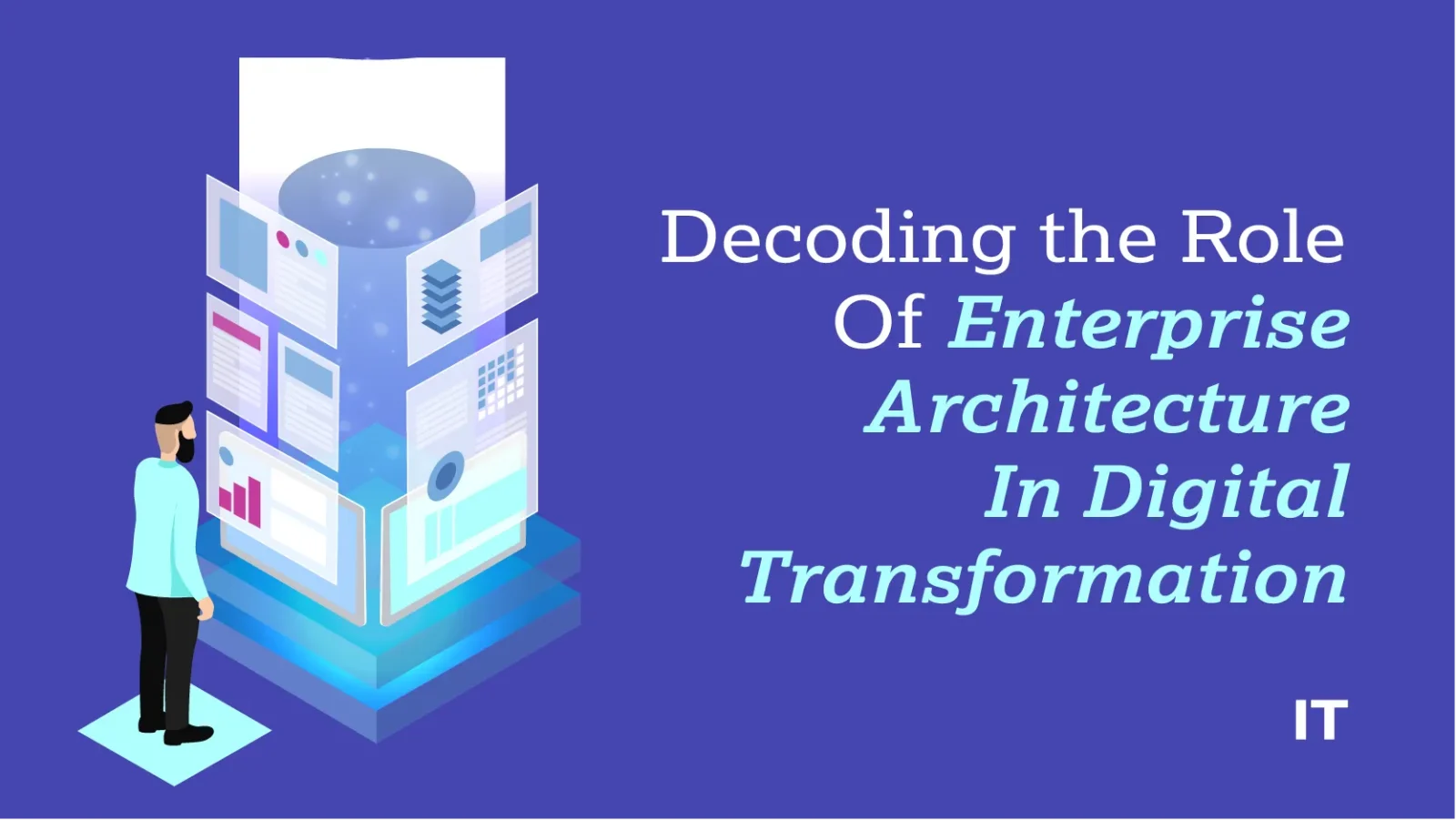Enterprise architecture lies at the heart of designing and integrating user-centric tools to create a digital-first organization. It usually needs a modern and seamless architecture to minimize technical debt, improve organizational capacity, and accelerate digital transformation initiatives. It bolsters the organization’s initiatives to be a well-integrated enterprise that is proactive to business and client needs.
A streamlined next-generation enterprise architecture acts as a catalyst to achieve the digital transformation goals of the organization. It facilitates a more efficient IT infrastructure that allows seamless sharing of data throughout the organization and aligns business goals with IT investments. In order to achieve its digital transformation goals, the organization needs to be agile enough to adapt to the evolving business and technological landscape. In this article, let us have a look at the role of EA in digital transformation.
What is Enterprise Architecture?
Enterprise architecture is a playbook that defines the IT infrastructure and the operations that rely on it. EA offers a bird’s eye view of processes, applications, tools, and business models with a clear preview of their codependencies and relationships. Enterprise architecture aligns business objectives with technologies to develop structured operations.
What Is The Role Of Enterprise Architecture In Driving Digital Transformation?
Modern enterprises are going through immense pressure to enhance the efficiency and effectiveness of their operations. They execute operations to accomplish the strategic goals of the business and unlock its true potential.
In today’s fast-changing market, businesses must be agile and align their IT assets and resources with their core operations. Successfully navigating these shifts is critical. This is where EA plays a vital role, helping companies map out both their current state and their future aspirations. The digital backbone, processes, and overall capabilities of an organization are essential for this journey.
Digital transformation encompasses integrating technologies to enhance operational efficiency and client engagement. EA offers standardized strategies to integrate the latest technologies into current systems, leading to seamless processes and enhanced efficiency.
EA in digital transformation serves as a strategic tool, guiding businesses toward their goals by enabling them to be more adaptable, customer-focused, and capable of delivering high-quality services. It empowers companies to make informed decisions across the board and is key to designing a company’s long-term strategy. Simply put, EA captures and aligns a business’s present and future goals, ensuring smooth integration between business processes and the IT landscape that supports them.
The outcome of enterprise architecture is a digital platform. Critical components of organizations like data, applications, and technology are saved on the digital platform. Embracing the EA framework enables businesses to design, develop, deploy, and deliver digital solutions quickly.
Also Read: CISO’s Playbook To Enhance Operational Technology Cybersecurity
The Key Objectives of Enterprise Architecture In Digital Transformation
Here are a few goals that EA in digital transformation helps businesses to achieve:
● Effectiveness:
Organizations can use enterprise architecture frameworks to develop accurate business processes. EA offers guidelines to the resources on how to achieve set business goals.
● Efficiency:
The guidelines to reutilize resources and minimize redundancies are clearly established in the EA framework. Effective business process models and operations mapping can allow organizations to have better collaboration.
● Agility:
Enterprises that are seeking opportunities to embrace EA to seamlessly integrate legacy tech with cutting-edge tech. EA in digital transformation will evaluate inherent technology risks and monitor the metrics. This analysis is required to understand when and how to optimize IT business architectures to make them in line with business goals.
● Continuity:
Sustaining critical business operations is one of the key factors for scaling organizations. EA helps decision makers to have structured IT and business workflows to ensure business continuity.
Organizations use EA to have more responsive IT systems due to their capabilities to easily access and use data. Additionally, it would offer access to data by meeting the compliance requirements. Enterprise architecture facilitates collaboration by improving transparency for the complete organization.
Best Enterprise Architecture Strategies For Successful Digital Transformations
Given below are a few strategies that decision-makers can consider to integrate EA into their digital transformation initiatives:
● Include Decision-makers and Stakeholders in Key Decisions
The key to success for any digital transformation strategy is when board members know the importance of technology to their business operations. Decision-makers can take time to make critical technical decisions that impact the success or failure of the organization’s goals.
● Prioritize Achieving Business Objectives
Digital transformation is revolutionizing business operations by integrating the latest technological innovations. The application offers seamless collaboration between enterprise IT strategy and business operations. A lack of seamless collaboration between business and IT infrastructure might hinder big transformations.
It is crucial to align the business strategy with enterprise architecture. EA works cohesively with the decision-makers and stakeholders to determine the business goals and objectives. It is an effective approach to connect the dots between the road map for successful digital transformation and subsequently achieve business value.
Wrapping Up Enterprise Architecture in Digital Transformation
Enterprise architecture and digital transformation are different sides of the same coin. As the technology landscape is rapidly changing, it is crucial to select the right tools that facilitate big-scale transformations in alignment with the digital transformation goals. Decision-makers need to have a clear road map that promises success in their digital transformation initiatives.
































